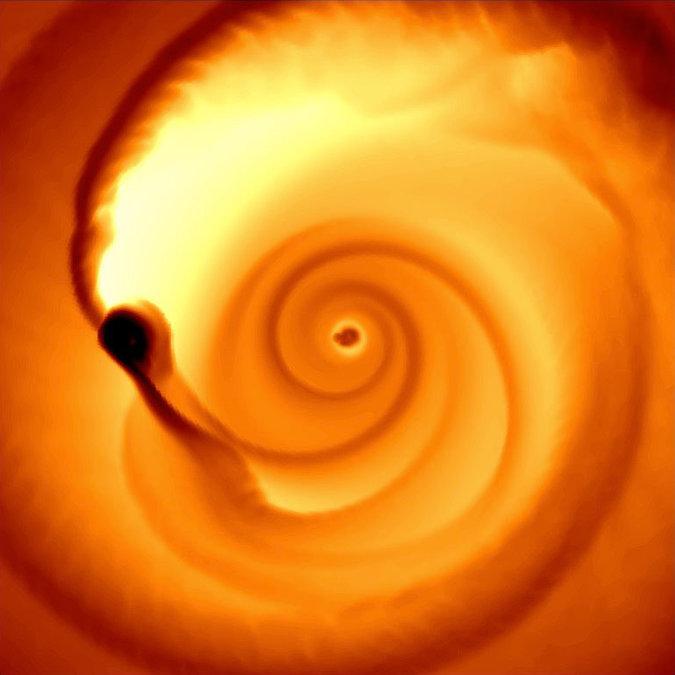Astronomers at several institutions have been watching as two black holes spiral toward each other. A collision of the two black holes, described as “supermassive” by researchers at Caltech because together they have a mass greater than one billion suns, would mean certain death for the galaxy around them. The center, or quasar, of this galaxy is referred to as PG 1302-102. It was a rhythmic flickering of the quasar that set researchers on the path to discovering the black holes’ trajectory.
Intriguingly, this collision path should not be possible for black holes based on current physical and astronomical theories. The general theory of relativity, which was proposed by Albert Einstein and is still the primary gravitational theory today, says that black holes are enormously massive and dense. Additionally, every galaxy seems to have one of its own. According to the theory, however, when galaxies merge it should be impossible for the black holes to actually get close enough to collide. They should simply orbit one another in an indefinite fashion.
The only way for this principle to be overridden is through the help of gravitational forces between gases and stars within the galaxy. Though the presence of enough solar masses of gas to make a difference seems unlikely at first glance, there is some support for the idea.
Graduate students at Columbia University have asserted that there is a large disc of gas surrounding the larger of the two black holes. This gas could be a source of light energy, explaining the light coming from the quasar. However, it could also be linked to the reasons for the seemingly impending collision.
The light that is produced by the disc of gas is very important for mapping and predicting the actions and attributes of the black holes. As the galaxies and quasar rotate, the light receives a boost because of the Doppler effect. The Doppler effect is the change in frequency of a wave or periodic event for an observer moving relative to its source. This Doppler boost happens every five years, and the scientists have seen exactly what they expected to so far, making this seem like a reliable way to model the quasar and black holes.
If this model is, indeed, reliable, then the black holes are predicted to collide in 100,000 years. When this event occurs, the collision will release as much energy as 100 million supernova explosions, blowing stars out of the way and essentially terminating the existence of the galaxy. In the meantime, there is quite a bit to be learned and tested, even with some of the most well-regarded theories in physics today.
Photo Courtesy of the New York Times.
Elinor Higgins ’18 is a staff columnist who writes the Eye on Science column. She is majoring in Biology and minoring in Women and Gender Studies. She enjoys eating chocolate and having meaningful conversations about the intricacies of life. She can best be reached at [email protected].




